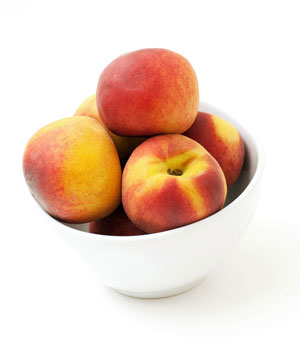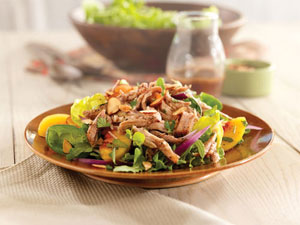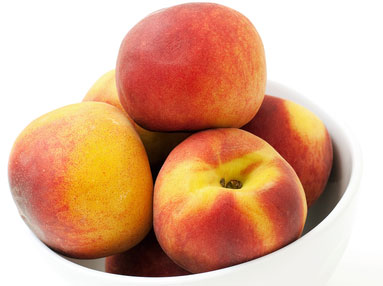
It turns out stone fruits such as peaches, plums, and nectarines are both tasty and good for your health.
These juicy fruits have bioactive compounds that can potentially fight off obesity-related diabetes and cardiovascular disease, according to new studies by Texas AgriLife Research.
The study, presented at the American Chemical Society in Philadelphia, showed that compounds in stone fruits could be a weapon against “metabolic syndrome,” in which obesity and inflammation lead to serious health issues, according to Dr. Luis Cisneros-Zevallos, AgriLife Research food scientist.
“Our studies have shown that stone fruits—peaches, plums and nectarines—have bioactive compounds that can potentially fight the syndrome,” Cisneros-Zevallos says. “Our work indicates that phenolic compounds present in these fruits have anti-obesity, anti-inflammatory and anti-diabetic properties in different cell lines and may also reduce the oxidation of bad cholesterol LDL which is associated to cardiovascular disease.”
What is unique to these fruits, he says, is that their mixture of the bioactive compounds work simultaneously within the different components of the disease.
“Our work shows that the four major phenolic groups—anthocyanins, clorogenic acids, quercetin derivatives, and catechins—work on different cells—fat cells, macrophages and vascular endothelial cells,” he explains. “They modulate different expressions of genes and proteins depending on the type of compound.
“However, at the same time, all of them are working simultaneously in different fronts against the components of the disease, including obesity, inflammation, diabetes, and cardiovascular disease,” he explains.
Cisneros-Zevallos says this is believed to be the first time that “bioactive compounds of a fruit have been shown to potentially work in different fronts against a disease.
“Each of these stone fruits contain similar phenolic groups but in differing proportions so all of them are a good source of health-promoting compounds and may complement each other,” he says, adding that his team plans to continue studying the role of each type of compound on the molecular mechanisms and confirm the work with mice studies.
The studies on the health benefits of stone fruit are funded by the California Tree Fruit Agreement, The California Plum Board, the California Grape and Tree Fruit League and the Texas Department of Agriculture. The Cisneros-Zevallos lab team in this study included Freddy Ibanez, Paula Castillo, Paula Simons, and Dr. Congmei Cao.
Nutrition Facts
Serving Size 1 fresh peach, about 2 ¾ inches in diameter
Calories: 68
Total fat: 0.44 g
Carbohydrate: 16.69 g
Fiber: 2.6 g
Protein: 1.59 g
Sugars: 14.68 g
Sodium: 0 mg
Potassium: 332 mg
Nutrition facts provided by the USDA National Nutrient Database.
Just Peach-y!
 To add more stone fruits to your diet, we’ve selected a few of our favorite sweet and savory peach dishes.
To add more stone fruits to your diet, we’ve selected a few of our favorite sweet and savory peach dishes.
- Pulled Pork Salad with Peaches and Cilantro
- Rustic Open-Faced Peach Pie
- Quick Spiced Peach Jam
- Peach Soup
Become a Saturday Evening Post member and enjoy unlimited access. Subscribe now



